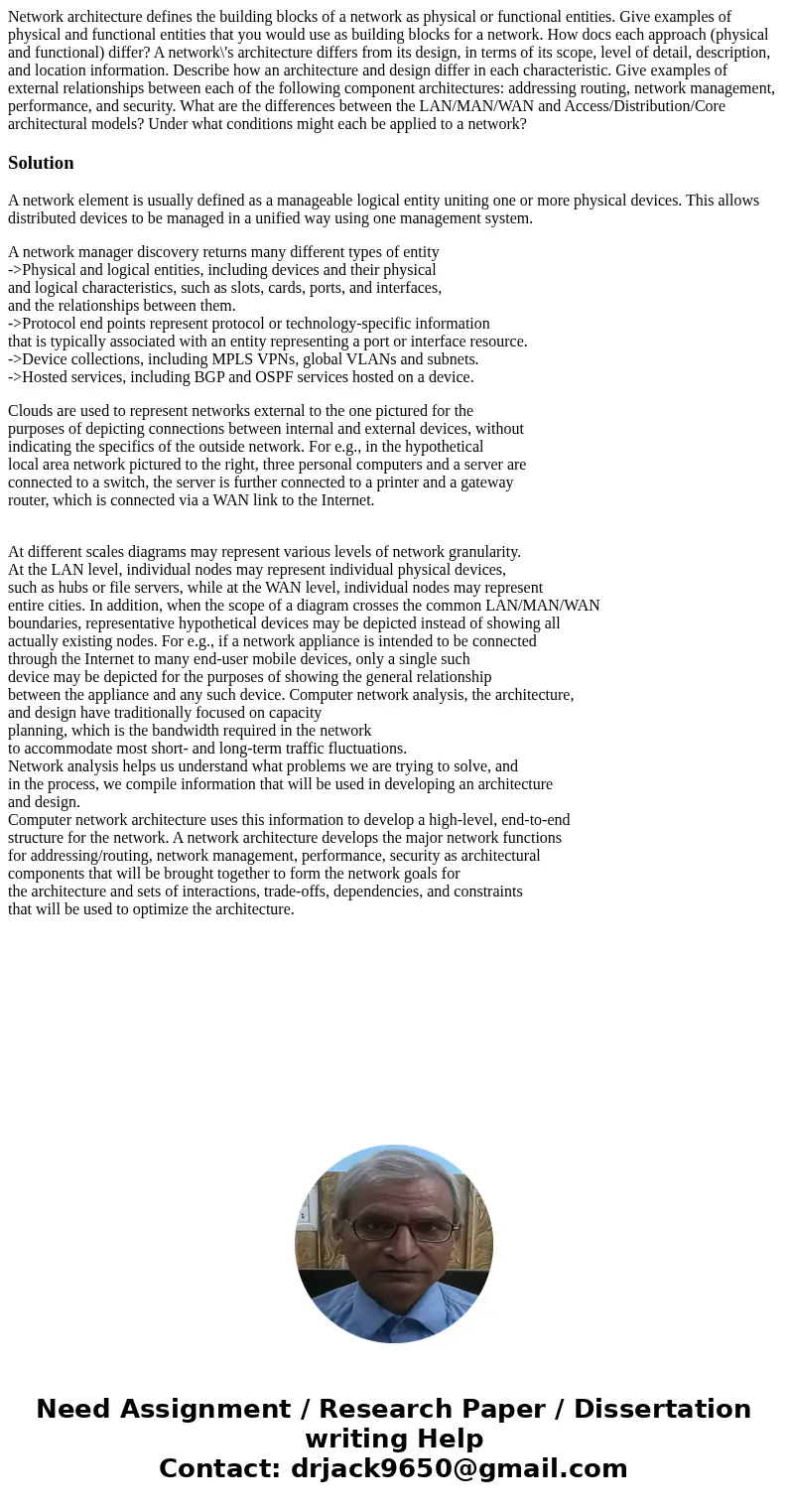Network architecture defines the building blocks of a networ
Solution
A network element is usually defined as a manageable logical entity uniting one or more physical devices. This allows distributed devices to be managed in a unified way using one management system.
A network manager discovery returns many different types of entity
->Physical and logical entities, including devices and their physical
and logical characteristics, such as slots, cards, ports, and interfaces,
and the relationships between them.
->Protocol end points represent protocol or technology-specific information
that is typically associated with an entity representing a port or interface resource.
->Device collections, including MPLS VPNs, global VLANs and subnets.
->Hosted services, including BGP and OSPF services hosted on a device.
Clouds are used to represent networks external to the one pictured for the
purposes of depicting connections between internal and external devices, without
indicating the specifics of the outside network. For e.g., in the hypothetical
local area network pictured to the right, three personal computers and a server are
connected to a switch, the server is further connected to a printer and a gateway
router, which is connected via a WAN link to the Internet.
At different scales diagrams may represent various levels of network granularity.
At the LAN level, individual nodes may represent individual physical devices,
such as hubs or file servers, while at the WAN level, individual nodes may represent
entire cities. In addition, when the scope of a diagram crosses the common LAN/MAN/WAN
boundaries, representative hypothetical devices may be depicted instead of showing all
actually existing nodes. For e.g., if a network appliance is intended to be connected
through the Internet to many end-user mobile devices, only a single such
device may be depicted for the purposes of showing the general relationship
between the appliance and any such device. Computer network analysis, the architecture,
and design have traditionally focused on capacity
planning, which is the bandwidth required in the network
to accommodate most short- and long-term traffic fluctuations.
Network analysis helps us understand what problems we are trying to solve, and
in the process, we compile information that will be used in developing an architecture
and design.
Computer network architecture uses this information to develop a high-level, end-to-end
structure for the network. A network architecture develops the major network functions
for addressing/routing, network management, performance, security as architectural
components that will be brought together to form the network goals for
the architecture and sets of interactions, trade-offs, dependencies, and constraints
that will be used to optimize the architecture.

 Homework Sourse
Homework Sourse